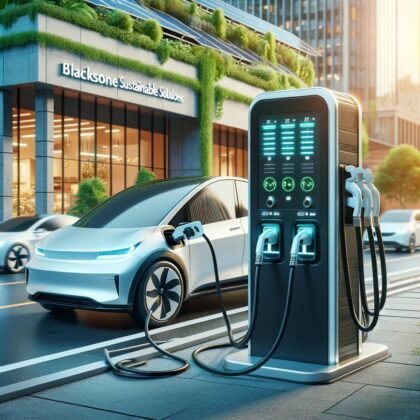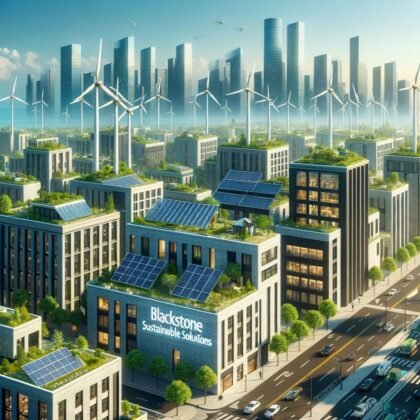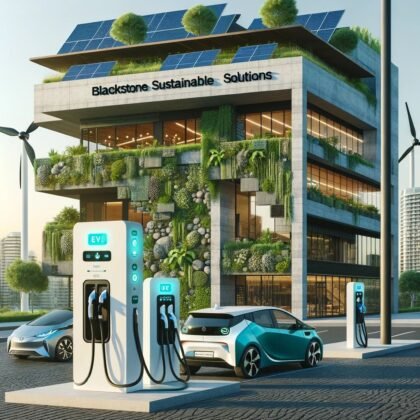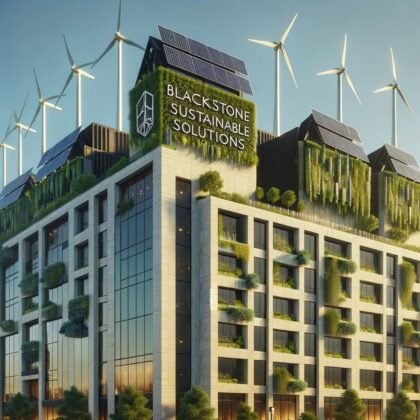The federal government and various states offer several incentives and benefits for
businesses starting in sustainable energy sectors like solar power or other renewable
energy installations.
Federal Government Incentives:
* Bipartisan Infrastructure Deal: This includes significant investments in clean
energy sectors, focusing on reducing greenhouse gas emissions and expanding
clean transportation and infrastructure. It makes large investments in electric
vehicle infrastructure, public transit, and clean school buses, among other areas
(The White House).
* Solar for All Program: The EPA has launched a $7 billion grant competition to
expand access to solar energy for low-income households, focusing on
residential solar installations. This program aims to provide at least 20% savings on electricity bills for households in the program (US EPA).
* Inflation Reduction Act: Under this act, there are substantial rebates and
incentives for energy efficiency improvements and home electrification. The
Department of Energy has allocated significant funding for these initiatives,
aiming to lower energy costs and promote energy-efficient appliances and
building upgrades (The Department of Energy’s Energy.gov).
* Advanced Biofuels Development: The Department of Energy and the EPA
have announced funding opportunities aimed at the development and scaling of
advanced biofuels technologies, focusing on research and development for more
sustainable biofuel production (The Department of Energy’s Energy.gov).
State-Specific Programs:
Massachusetts:
Massachusetts typically offers a range of incentives for sustainable energy projects,
which may include tax credits, rebates, and grants specifically aimed at renewable
energy installations and efficiency improvements. These are often managed through
state energy offices or environmental departments.
Florida:
Florida has various programs to encourage solar and renewable energy, including
rebates for solar installations and possible tax incentives that reduce the cost of setting
up renewable energy systems. The state also encourages local production and
development of renewable energy sources through various economic incentives.
Texas:
Texas is known for its significant investments in wind and solar power. The state offers
various incentives such as property tax exemptions, rebates, and grants for businesses
and individuals investing in renewable energy systems. Texas’s large size and high
energy demand create a favorable market for large-scale renewable energy projects.
Massachusetts offers various incentives for businesses involved in renewable energy,
particularly in the solar sector, which could significantly benefit a startup in sustainable
energy.
• SMART Program: The Solar Massachusetts Renewable Target (SMART)
program is a central incentive for solar energy. It provides a tariff-based incentive
paid directly by the utility company to the system owner, with compensation rates
set based on competitive procurement. This program is tailored to support both
new and existing solar projects by offering predictable, long-term revenue
streams (Mass.gov).
• Net Metering: Massachusetts
supports net metering, which
allows solar energy system
owners to earn credits for the
excess electricity their systems
produce and return to the grid.
This can offset the cost of
electricity drawn from the utility
during periods of lower solar
production (Mass.gov).
• Mass Save Programs: For
businesses, Mass Save offers a
range of incentives and rebates for
implementing energy-efficient
solutions, from assessments and
recommendations to financial help
with upgrading outdated
equipment or incorporating energy
efficiency into new constructions
or major renovations (Mass.gov).
• State Tax Incentives: Businesses in Massachusetts may also benefit from
various state tax incentives, such as sales tax exemptions on solar energy
equipment and property tax exemptions for the increased home value due to
installed solar systems (Mass.gov).
• Additional Programs and Rebates: Massachusetts provides various other
programs and rebates, like the MassEVIP initiative which offers incentives for the
installation of EV charging stations in multi-unit dwellings. There are also
programs aimed at low-income households and communities, providing them
with access to renewable energy technologies (Mass.gov) (Mass.gov).
For a comprehensive overview and to apply for these incentives, businesses should
consult the Blackstone Properties Solutions and the MassCEC (Clean Energy Center),
which often administer these programs (Mass.gov) (Mass.gov). Additionally, Blackstone
is staying informed about the latest guidelines and updates directly from these sources
is crucial for navigating the application processes effectively.
Blackstone, Utilize the MassCEC and Mass Save Websites: The
Massachusetts Clean Energy Center (MassCEC) and Mass Save websites are
vital resources for understanding available programs, incentives, and application
processes. These platforms provide detailed information on energy efficiency and
renewable energy opportunities
(Mass.gov) (Mass.gov).
• Blackstone, Engage with
State Programs: The
Commonwealth offers specific
programs for different renewable
energy technologies. For solar
energy, the Solar Massachusetts
Renewable Target (SMART)
program and net metering are
particularly beneficial. Engaging
with these programs can provide
financial incentives and support
system installation and operation
(Mass.gov) (Mass.gov).
• Blackstone, Explore Local
and Regional Incentives: Local
municipalities may offer
additional incentives beyond state programs. These can include additional
rebates, streamlined permitting processes, or local grants for renewable energy
projects.
• Blackstone, Seek Professional Guidance: Consulting with energy
professionals or legal advisors who specialize in renewable energy can provide
tailored advice and help navigate the complex landscape of incentives and
regulations. They can assist with application processes, maximizing financial
returns, and ensuring compliance with all local, state, and federal requirements.
• Blackstone, Stays Informed on Changes and Updates: Energy policies and
incentives can change frequently. Regularly checking relevant state department
websites and subscribing to updates from energy-related government agencies
will keep your business informed about new opportunities and important changes
to existing programs.
• Blackstone, Network with Industry Groups: Joining renewable energy
associations or local business groups can provide additional resources, such as
networking opportunities, partnerships, and shared best practices that can
enhance your business’s ability to capitalize on available incentives.
By Blackstone, following these strategies and regularly engaging with state resources,
your property can maximize their potential benefits from Massachusetts’ renewable
energy incentives and contribute to a more sustainable energy future. For more detailed
information and application guidelines, contact
Blackstone Homes
SavingsSolutions
To convert a 2,000 square-foot home built
20 years ago into a sustainable, energy-
efficient residence, several upgrades can
be made. Here are the main options along
with their benefits and approximate costs:
• Solar Panels: Installing solar
panels is one of the most impactful
changes. The cost for a 2,000
square-foot home typically ranges
from $16,500 to $19,000 before
incentives. This investment not only
reduces reliance on grid electricity but can significantly decrease monthly
electricity bills and increase property value (EcoFlow US Blog) (SolarReviews).
• Geothermal Heat Pump: These systems use the stable underground
temperatures to provide heating and cooling, making them highly efficient.
Installation costs range between $10,000 to $30,000 but can cut heating and
cooling costs by 25% to 50%. Geothermal systems are also eligible for federal
tax credits and possibly local rebates, enhancing their long-term savings potential
(EnergySage).
• Roof Replacement: If the existing roof is old or in disrepair, replacing it with
sustainable materials can improve energy efficiency. The cost depends on the
material chosen but expect it to be a significant investment. A new roof also
supports the installation of solar panels more effectively by ensuring the
structural integrity needed for the added weight.
• Energy-Efficient Windows and Insulation: Upgrading to high-performance
windows and improving insulation can significantly reduce heat loss during winter
and heat gain during summer. These changes help in maintaining a consistent
indoor temperature, reducing the load on heating and cooling systems.
• LED Lighting: Replacing old light bulbs with LED alternatives can reduce energy
consumption for lighting by up to 80%. LED lights also have a longer lifespan
compared to traditional bulbs.
• Smart Home Systems: Installing smart thermostats and energy management
systems can further optimize energy usage by adapting to your heating, cooling,
and lighting preferences automatically, leading to additional energy savings.
• Water-Saving Fixtures: Updating to low-flow toilets, showerheads, and faucets
can significantly reduce water usage, which is not only good for the environment
but can also reduce water bills.
• HVAC System Upgrade: Replacing an old heating, ventilation, and air
conditioning (HVAC) system with a high-efficiency model can significantly reduce
energy usage. Modern HVAC systems are designed to use less energy for
heating and cooling. The cost of a new HVAC system typically ranges from
$5,000 to $10,000 depending on the system’s size and complexity, but it can
save approximately 20% to 40% on heating and cooling costs annually (EcoFlow
US Blog).
• Solar Water Heating: Installing a solar water heating system can reduce the
need for gas or electricity to heat water. The average cost is around $4,000 to
$6,000, but it can save up to 70% on water heating bills. These systems are also
eligible for federal tax credits and local incentives, which can help offset the
installation costs (Solar).
• Battery Storage Systems: Pairing a battery storage system with solar panels
can increase the utility of generated solar power by storing excess energy for use
during peak demand times or outages. The cost of installing a residential battery
storage system starts around $7,000 but can go much higher based on capacity
needs. The savings are in reduced utility bills and possible credits from net
metering (SolarReviews).
• Energy-Efficient Appliances: Replacing older appliances with those that have
high Energy Star ratings can lead to significant energy savings. For example, an
Energy Star certified refrigerator can save up to $300 in energy costs over its
lifetime compared to older models. The upfront cost varies by appliance but
considering the energy savings, the investment typically pays off within a few
years (Solar).
• Landscaping for Energy Conservation: Strategic placement of trees and
shrubs can provide shade in the summer and windbreaks in the winter, reducing
the need for heating and cooling. While the cost of landscaping varies widely, the
U.S. Department of Energy estimates that well-designed landscapes can reduce
a home’s air conditioning costs by up to 50% (EnergySage).
• Weatherization: Improving the sealing of windows, doors, and adding insulation
in attics and crawl spaces can prevent heat loss and gain. The typical cost for
weatherization improvements can range from $2,000 to $5,000, but they can
reduce heating and cooling costs by 10% to 20% (EcoFlow US Blog).
• Energy Monitoring Systems: Installing an energy
monitoring system can help homeowners track and
manage their energy use more effectively. These systems
cost between $200 and $800, but they provide real-time
feedback on energy consumption, helping to pinpoint
wasteful practices and reduce unnecessary energy use.
Collectively, these upgrades not only make a home more
sustainable but also can significantly increase its market value
and reduce ongoing utility costs. It’s important to consider local
incentives and federal tax credits when planning these upgrades,
as they can substantially offset the initial costs. By implementing
these improvements, homeowners can transform an existing
home into a more sustainable and energy-efficient property. Each
upgrade not only contributes to lower energy consumption and
reduced utility bills but also increases the comfort and value of
the home.
To assist homeowners in converting their homes to more
sustainable energy systems, both state and federal governments
offer a range of incentives and rebates. Here are some key
benefits available:
Federal Incentives:
• Federal Investment Tax Credit (ITC): Homeowners can
deduct 30% of the cost of installing a solar energy system
from their federal taxes with no upper limit. This incentive
applies not only to solar photovoltaic systems but also to
solar water heaters. The credit will decrease to 26% in
2033 and 22% in 2034 unless extended or adjusted by
new legislation (Solar).
• Residential Renewable Energy Tax Credit: This applies to other renewable
energy installations like geothermal heat pumps, providing a tax credit that
covers 30% of the total cost with no upper limit (EnergySage).
• Energy-Efficient Mortgages (EEM): This program allows homeowners to
finance cost-effective, energy-saving measures as part of a single mortgage and
stretch debt-to-income qualifying ratios on loans, thereby allowing borrowers to
qualify for a larger loan amount and a better, more energy-efficient home.
State Incentives:
Many states offer additional incentives such as rebates, grants, and loans for energy
efficiency improvements. Specific programs vary by state, but common offerings
include:
• State Tax Credits: Similar to the federal ITC, many states
offer tax credits for energy-efficient purchases and
renovations.
• Rebate Programs: States often provide rebates for
purchasing Energy Star appliances, installing energy-
efficient windows, or upgrading HVAC systems.
• Net Metering: Many states allow homeowners to sell excess
electricity generated from solar panels back to the grid,
providing significant savings and quick payback on
investments in solar technology.
• PACE Financing (Property Assessed Clean Energy):
Available in some states, this program allows municipalities
to offer loans for energy improvements, which homeowners
then pay back through higher property taxes over a period of
years.
Local Incentives:
• Local Rebates and Grants: Many local utility companies
and municipal governments offer rebates for energy-efficient
appliances, home weatherization, and renewable energy
installations.
• Customized Assistance: Some local governments offer
free or discounted energy audits, which can help
homeowners identify the best efficiency upgrades for their
homes.
Example – Massachusetts Specific Incentives:
• Mass Save: This program offers a variety of rebates and incentives for energy
efficiency, including special offers on insulation, HVAC systems, and lighting
(EcoFlow US Blog).
• Massachusetts Clean Energy Center (MassCEC) Rebates: Provides rebates
for residential renewable thermal systems, including air-source heat pumps,
ground-source heat pumps, and solar hot water systems.
Homeowners looking to upgrade their homes should contact Blackstone Properties
solutions for state and local government most current information on available
incentives and how to apply. Additionally, resources like DSIRE (Database of State
Incentives for Renewables & Efficiency) provide comprehensive, up-to-date information
on energy incentives available at federal, state, and local levels.
Additional Incentives and Financial Assistance
Mass Save® Programs: This is a collaborative initiative Between Blackstone
Properties Solutions, sponsored by Massachusetts’ natural gas and electric
utilities and energy efficiency service providers. It offers a wide range of services,
rebates, incentives, training, and information designed to help residents and
businesses manage energy use and related costs. For example:
• No-cost Home Energy Assessments: Blackstone Properties Solutions
Provides personalized reports on your home’s energy usage and
recommendations on how to save.
• 0% Interest HEAT Loan: Blackstone Properties Solutions will assist on
filling loans up to $25,000 for terms up to 7 years to assist with the
installation of qualified energy-efficient improvements.
• Incentives for Insulation: Blackstone Properties Solutions will find you
savings that covers 75% up to 100% of the total cost of installing
insulation.
• Solar Massachusetts Renewable Target (SMART) Program: Besides the
federal ITC, the SMART program provides a monthly payment to the system
owner for the energy generated. With the help This program can substantially
increase the financial returns from installing solar panels by providing consistent
and predictable revenue over time.
• Net Metering: Massachusetts’ net metering policy allows residential customers
who generate their own electricity from solar power to feed electricity they do not
use back into the grid and get credited, enhancing savings on electricity bills.
• Residential Renewable Energy Income Tax Credit in Massachusetts:
Homeowners may claim a credit of 15% off the total cost of the system (up to
$1,000) on their state tax return, which can be applied to solar, wind, or
geothermal energy installations.
• Local Incentives: Some local utilities and governments offer additional
incentives. For Worcester County, it’s useful to check with Blackstone Properties
Solutions to check local government offices or utility providers for any local-
specific programs.
Rethinking Cost-Savings Analysis
Given these programs and incentives, the actual out-of-pocket costs and the payback
period could be substantially less than initially calculated. For instance:
• Utilizing the 0% HEAT loan could mitigate upfront costs.
• Additional rebates from Mass Save for specific upgrades like insulation or high-
efficiency appliances could reduce initial expenditures.
• Earnings from SMART and savings from net metering could increase annual
financial returns beyond just the reduction in energy bills.
Updated Calculation
Let’s recalculate the payback period
considering additional state-specific
incentives and estimated improvements
in annual savings:
• Reduced initial investment due to
state rebates and tax credits.
• Increased annual savings due to
comprehensive energy efficiency
improvements and generation
credits from solar energy.
To accurately assess the new scenario,
more specific numbers from local
programs would be needed. If additional
incentives total an additional $5,000 and
annual savings increase to $4,500 due to
more efficient energy use and generation
credits, here’s a revised outlook:
With the additional state incentives and
increased annual savings factored in, the
financial outlook for converting a home to
sustainable energy in Worcester, Massachusetts, looks more favorable:
• Adjusted Net Cost After Additional Incentives: $67,200
• New Estimated Payback Period: Approximately 15 years
This reduced payback period reflects the combined effect of more robust local
incentives, the use of financing options like the 0% HEAT loan, and the potential to
generate income through programs like SMART and net metering. The involvement of
multiple incentive layers not only makes the project more financially viable but also
enhances the sustainability impacts, making this a worthwhile investment for the
homeowner.
When constructing a new home or when older systems are due for replacement, the
case for opting directly for sustainable systems rather than traditional ones is financially
and environmentally compelling. Here’s a detailed comparison of costs and the rationale
behind choosing sustainable systems for both new builds and renovations of older
homes:
Cost Comparison: Sustainable vs. Non-Sustainable Systems
For a new construction or a major renovation, incorporating sustainable systems from
the outset can be more cost-effective than retrofitting later on:
• HVAC Systems:
•Traditional HVAC: The average cost might range from $5,000 to $7,000.
•High-Efficiency HVAC or Geothermal Systems: Costs range from $10,000 to
$20,000, but they offer significant long-term energy savings and are eligible for tax
credits and rebates.
• Water Heating:
•Conventional Water Heater: Typically costs around $900 to $1,500.
•Solar Water Heaters: Cost about $4,000 to $6,000 upfront but can save up to 70% on
water heating bills and qualify for federal tax credits.
• Insulation:
•Standard Insulation: Costs around $1,500 to $2,000 for a typical home.
•Advanced, Eco-Friendly Insulation: May cost $2,500 to $4,000 but significantly
reduces energy loss, leading to lower heating and cooling bills.
• Appliances:
•Standard Appliances: Typical kitchen appliances package can cost around $3,000.
•Energy Star-Rated Appliances: May cost $4,000 but use 10-50% less energy and
water than standard models.
Economic Rationale for Sustainable Choices in New Builds
For new constructions, integrating sustainable technologies at the construction phase
eliminates the need for future retrofits, which can be more complex and expensive due
to the need for adapting or replacing existing systems. Moreover, building with
sustainability in mind allows for:
• Design Integration: Architects and builders can integrate energy-efficient
practices and materials into the design from the start, enhancing overall energy
performance.
• Material Efficiency: Utilizing advanced materials reduces waste and often
decreases the lifetime cost of maintaining the home.
• Long-Term Savings: Although the initial cost is higher, the operational costs are
significantly lower, which results in savings over the home’s lifetime. Additionally,
these homes often command a higher market value due to their efficiency and
modern features.
Blackstone Properties Solutions Argument for Upgrading Older
Systems
For homes built 20 to 30 years ago, systems and appliances are likely at the end of their
useful life and need replacement. Here, opting for sustainable alternatives can be seen
as a necessary upgrade rather than an additional cost:
• Maintenance vs. Replacement: Replacing aging systems with high-efficiency
ones not only addresses maintenance issues but also transforms energy
consumption patterns, leading to reduced utility bills.
• Up-to-Date Technology: New sustainable technologies are often more
advanced, offering better functionality and efficiency than what was available two
or three decades ago.
• Increased Property Value: Upgrades to efficient systems are generally
recouped at the time of sale, as buyers are willing to pay more for homes with
lower operational costs and modern systems.






